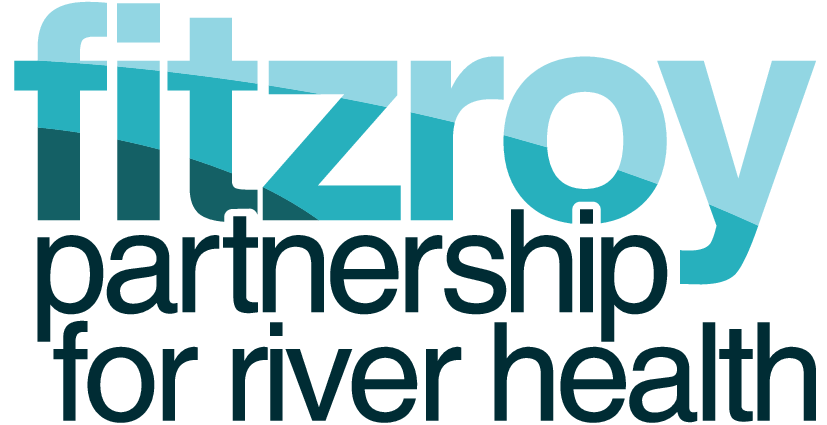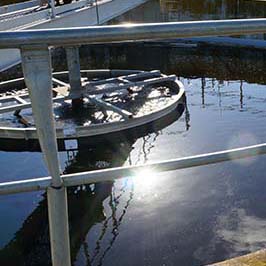Rockhampton sewerage upgrades reduces waterway risks
A key risk to aquatic ecosystem health, particularly in areas of high human population growth, is the potential for inadequate treatment of wastewater and sewage. Aside from the risks to human health due to accidental release of untreated sewage or discharge of ineffectively treated sewage, such events also impact upon the health of receiving waters through the addition of high nutrient loads, suspended solids and bacterial pathogens.
The Fitzroy Partnership for River Health’s 2012-13 Report Card rated the health of the Fitzroy River estuary as a B-good grade. Amongst the indicators contributing to this grade were oxidised nitrogen (C-fair grade), ammonia (B-good grade), total phosphorus (C-fair grade) and turbidity (B-good grade). While nutrients are required for healthy freshwater and marine ecosystems, there are thresholds of nutrient levels above which water quality is degraded. The impacts of too much nutrient input and high turbidity levels can include algal blooms, loss of important native vegetation, reduced oxygen levels (meaning fish and other water-breathing animals can’t breathe and may die) and eventually loss of habitat, biodiversity and ecosystem function. There are a variety of natural and anthropogenic sources that can add to the concentrations of these parameters and one of the potential discharge points is the water that is released from Rockhampton’s sewerage networks 50 kilometres upstream. Rockhampton Regional Council is committed to improving nutrient removal in its wastewater treatment plants as the region’s population grows.
To minimise the potential for impacts on aquatic ecosystems, sewerage networks need to be well maintained and capable of handling and treating influxes of domestic, industrial and commercial wastewater. The Queensland Government imposes effluent standards for release of treated wastewater which councils adhere to.
[page_divider type=”mist_on_river”]Case Study[/page_divider]
Rockhampton Regional Council owns and operates five sewerage networks:
- North Rockhampton sewerage network
- South Rockhampton sewerage network
- West Rockhampton sewerage network
- Gracemere sewerage network and
- Mount Morgan sewerage network.
In Rockhampton, the three networks incorporate 38 pump stations, 582 kilometres of mains, 21,390 access chambers and 23,603 sewer connections and service a significant population:
- North Rockhampton Sewage Treatment Plant (servicing 40,000 equivalent persons)
- South Rockhampton Sewage Treatment Plan (servicing 19,000 equivalent persons) and
- West Rockhampton Sewage Treatment Plant (6,000 equivalent persons).
The West Rockhampton Plant was built in 1962 and uses a trickling biofilter design to remove suspended solids, biodegradable organic carbon and bacterial pathogens such as Escherichia coli. Unlike the larger and significantly newer North Rockhampton Sewage Treatment Plant (built in 1986) which uses an extended aeration and activated sludge treatment process, the West Rockhampton Plant does not remove nitrogen from the water. The South Rockhampton Plant, built in 1983, employs an activated sludge treatment process and also does not consistently remove total nitrogen from wastewater.
The Rockhampton region is facing a period of continued population growth, with a forecast increase from 85,067 in 2015 to 113,096 in 2036. To prepare for this rise in population, Rockhampton Regional Council is implementing a plan of action that is set to improve sewage treatment in Rockhampton and thereby improve the quality of treated wastewater entering the Fitzroy River. The proposed scope of works, which will be carried out in a staged process over the next 10 years, could see as much as $100 million spent on sewage treatment plants in order to meet future population growth. Key projects currently underway include:
- Decommissioning the old West Rockhampton plant ($0.8 million) and diverting the wastewater previously treated at that plant to the more efficient South Rockhampton plant ($4 million)
- An interim upgrade of the South Rockhampton Sewage Treatment Plant to a design that is capable of consistently removing nitrogen from the final effluent ($0.9 million)
- Augmentation of the North Rockhampton Plant ($50.5 million) and, in future, the South Rockhampton Plant ($46 million) to ensure sufficient capacity to treat increasing waste waters from the growing population and
- Establishment of recycled water schemes for the Rockhampton Sewage Treatment Plants ($2.7 million), similar to the scheme already in place in Gracemere, in which all flows are recycled and disposed of to land.
In addition, the Mount Morgan Sewage Treatment Plant is undergoing a separate planning exercise for future expansion.
[page_divider type=”waterways_box”]Benefits of sewerage investment[/page_divider]
This upgrade plan will ensure that legislated effluent standards are consistently met into the future and help to secure the future ecological health of one of the Rockhampton Region’s major tributaries, the Fitzroy River. The upgrade of the South Rockhampton Sewerage Treatment Plant and the decommissioning of the West Rockhampton Sewerage Treatment Plant is expected to reduce the input of nitrogen to the Fitzroy River estuary by between 500 and 1000 kilograms per week. Improved odour control and reduced noise levels will also benefit the residents surrounding the existing Rockhampton Region plants.
Overall, improvements in sewage treatment and outputs lead to better river water quality and better environmental outcomes for Keppel Bay and the Great Barrier Reef lagoon.
[page_divider type=”ripple”]
“The multi-million dollar upgrades to the Rockhampton
sewerage network will see reduced nitrogen output
as one of the key outcomes and Council is committed
to this as an important community responsibility for
the health of our waterways and the Great Barrier Reef.”
Cr Greg Belz, Chair Water Committee Rockhampton Regional Council
[/page_divider]
Links:
http://www.rockhamptonregion.qld.gov.au/Home
Case study framework developed by Rachel Eberhard : Design by Nicole Dendle : Text by Nicole Flint : Thanks to case study organisation



